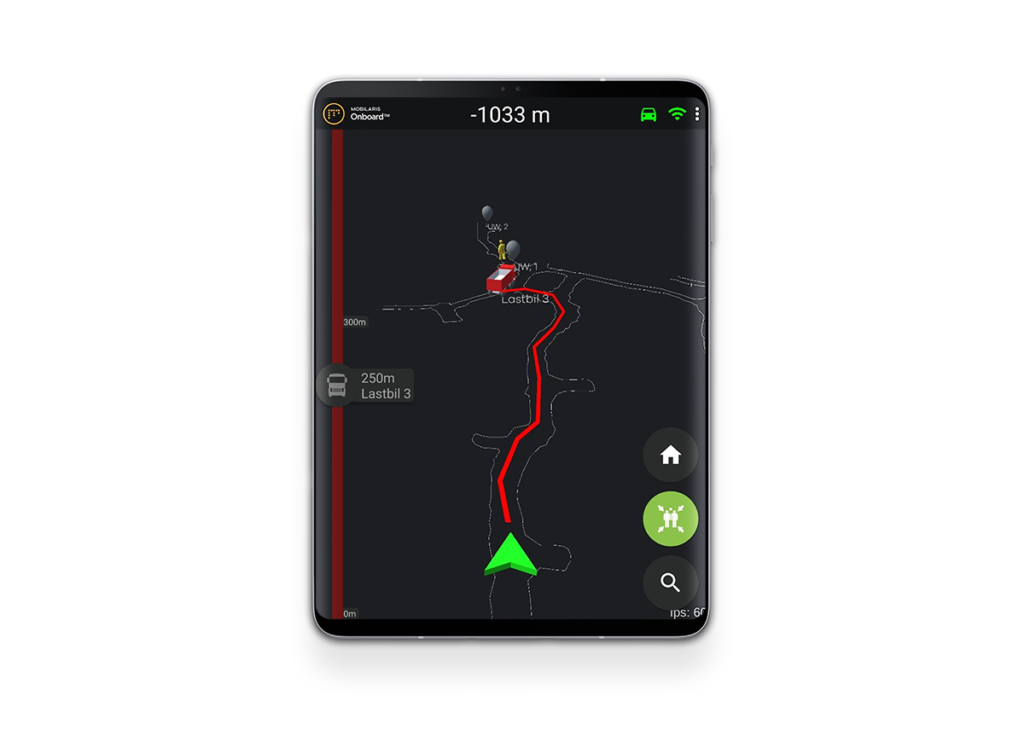One of the features of the new Mobilaris Onboard™ real-time situational awareness technology can, according to Hans Wahlquist, VP Business Development & Strategic Product Management for Mobilaris Mining & Civil Engineering, solve the majority of an underground mine’s traffic congestion issues without the need for any additional infrastructure.
As Wahlquist says, traffic congestion is one of the biggest time thieves in a modern underground mine.
“Even as there are bays to park in and let someone pass by, it is difficult to know if there is anyone coming my way,” he says. “Additionally, if I do know about an incoming machine or vehicle, it is still a possibility that the parking spot I am planning to use is already occupied by another vehicle. Simply put, using the radio to avoid traffic congestions is not a perfect solution.”
A traditional approach to solve this is the creation of an advanced traffic management solution where traffic lights would be controlled in order to manage the traffic. Solutions like this are expensive to build and deploy, according to Wahlquist.
“Luckily, these problems can now easily be mitigated with the advent of a new revolutionary product called Mobilaris Onboard using the patent pending Mobilaris Hybrid Positioning™ technology,” he said.
“With the advent of Mobilaris Onboard mounted inside a vehicle, you will get a virtual ‘radar’ that warns you about any vehicles coming your way. As the Mobilaris Onboard knows about all assets in the mine and who is moving and in what direction, together with its own location and direction with an accuracy of 5-10 m, we can create an early warning before a potential traffic situation,” he said. “This enables you to sort out the situation before it will turn into a problem.”
This new feature is called Traffic Awareness.
“We are confident that Traffic Awareness will solve the majority of your traffic congestion issues without any additional infrastructures for high precision positioning or traffic management solutions,” Wahlquist says. “The theory is simple but powerful, if two vehicles meet and both drivers see each other, they will directly know who should give way to whom.”
Investigations have shown traffic slowdown in ramps and other areas with dense traffic are one of the biggest contributors to lost productivity.
Wahlquist explained: “From a recent study at a Canadian mine, a truck round trip from stope to rock breaker averaged 20 minute; as small as 10 minutes, and as large as 50 minutes. The large variation in ramp time could be attributed to, in part, congestion on the ramp and/or rock breaker. By reducing the longest round trip from 50 minutes to, say, 35 minutes (but not changing the average), an extra three to four trips could be possible per shift. This would be facilitated by Onboard to keep ramps and haulage ways clear for priority truck traffic. Queuing time at the rock breaker could also be reduced as truck travel time becomes more repeatable.”
In addition to the productivity gains that Traffic Awareness enables, the effects on safety are huge, according to Wahlquist. “Traffic Awareness is not the same thing as a Collision Awareness system (CAS). Instead it gives drivers the needed awareness and a very early warning that something is coming their way. It will not replace CAS or Proximity Detection Systems but instead work as a very important complementary ‘long range’ system.”











